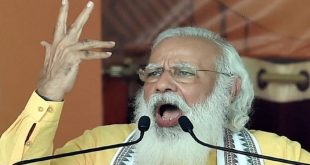By NAJIBULLAH LOODIN
The concern of gender inclusion in water management has been evolving since decades. The first international attempt to recognize the issue of gender in natural resources management policy happened in 1970s via “Women in Development” (WID) approach. It was later used by international organizations such as the United Nation, which believed that women’s effective participation contributes to the development of projects. However, the concept of WID was not successful as it was expected. This is because WID considered women as an isolated target group in natural development projects. Later on, a newly holistic approach, ‘Women and Development’ (WAD) was emerged. However, it was soon failed because of its inability to assess the causes of the differences how men and women participate in development process. After the failure of WAD, a new approach called, “Gender and Development” (GAD), was emerged. This approach is based on an assumption that gender discrimination is widespread at all levels and in all forms of social organizations, land and property ownership, education, employment and political arena. GAD approach believes that development will achieved at all levels if gender inequality is addressed.
Despite women’s active involvement in water sub-sectors such as agriculture and irrigation, women have been overlooked in decision making regarding management of water resources development projects especially in rural areas. Upadhyay argues that a large number of publications on gender and irrigation corroborates that due to gender discrimination, women are under-served in irrigation institutions and policy despite their high and active contribution in irrigated agriculture. In patriarchal male-dominated societies, women’s voices are seldom heard at the community and policy levels. One of the reasons why women’s contribution and voices in water related projects are undervalued or unrecognized is because of the religion. Religion considers women subordinate in a community. Even woman’s connection to outside community should be mediated via male member of her family such as her husband, brother, father or son. The religion does not permit women to own land and property. Since women are prohibited to possess property and land, they are not allowed to receive the membership of Water User Association (WUA). According to Upadhyay (2003) research, stereotypes and social practices have also contributed to absence of women in water management decision making in South Asia.
Upadhyay (2003) also believes that Women’s illiteracy is another major factor preventing them to get their voices heard by the decision makers in water management. Moreover, timing and location of the meetings are two other reasons why women’s participation in decision making processes regarding water management is overlooked. For instance, most of the meetings in Ambewela Irrigation system, Sri Lanka, are held at night which best fit men’s preference. However, women are traditionally unable to participate night meetings.
In addition to women illiteracy, Prokopy (2004) found out that there are also other reasons that contributed to the low participation of women in decision making regarding water management. These reasons are:
- Lack of leadership and decision making skills outside the household, and lack of self-confidence
- ignoring women’s need in scheduling the meetings
- Social practices are also contributing to the absence of women in meetings, and
- Cultural and religious beliefs are also hurdle toward women’s participation in meetings regarding water management specifically in rural areas. Even if women attend, they are not allowed to talk.
Despite of many challenges toward women’s participation in water resources management meetings, sometimes women themselves are not interested to participate. This is because women are highly busy at the household. They are mainly responsible to cook, take care of the children, and do labor-intensive tasks at the farm. Prokopy actually wanted to find out if there is any relationship between project success and women participation. For this purpose, she analyzed the data of two World Bank rural water supply projects in two different states of India, Uttar Pradesh (UP) and Karnataka. The main question which was asked from interviewees in UP and Karnataka states was whether women attend the meeting or not. Twenty-six percent of the surveyed female who were member of the committee Karnataka and five percent committee members in UP, said that their sons or husbands take part in meetings instead of them. Then they were asked why, and the women said that their seats in the committee are reservation seats and they do not have knowledge about water project. Furthermore, social norms don’t allow them to take part in the meetings. Despite of the low participation of women in water related project meetings in UP and Karnataka, some interviewees believe that their engagement in water management projects has been increasing.
In addition, Schreiner and Van Koppen (2003) believe that women’s participation in decision making regarding water sector is quite vital. In fact, gender mainstreaming can contribute to the eradication of poverty in a society. They evaluated how the inclusion of gender and race in water sector alleviates poverty from a society. Their findings also reveal the current obstacles toward full engagement of women in water sector. Schreiner and Van Koppen (2003) have also found out that the reason why women are unwilling to participate in community development projects is because of their chore at home. For instance, they have to cook dinner and take their children to school and get them back home after school. Such tasks prevent them to take part in night meetings. They have also found that sometimes women underestimate themselves compared to men. That is why women have a weaker presence in water sector leadership.
However, Shrestha and Clement (2019) uncovered how women are ignored in water user association decision making despite of their 30% quota in water user committees. They further assess how the current gender-based water management policy in Nepal is unsuccessful in addressing the effective inclusion of gender in water sector. In Nepal, women are not allowed to take part in meetings. Instead their husbands, sons, brother in-law and father in-law participate. Even they are not recognized as irrigators in their family. As a consequence, their multiple water use and need are overlooked.
In patriarchal male-dominated societies, women’s contribution in water development projects have been overlooked. There are many reasons why women’s participation in water management projects are undervalued or unrecognized. Shrestha and Clement (2019) believe that the current water sector policy does not address the issue of gender parity in a more comprehensive manner. They also criticized the gender initiative projects which are funded by World Bank or Asian Development Bank in South Asia. This is because the issue of gender parity in development projects disappears once the project terminates.
To sum up, for an effective inclusion of gender in water management policy, the author believes that South Asian States must put emphasis on capacity building of marginalized and underserved communities specifically the women. South Asian States must revise and redefine their policies regarding water management and gender inclusion. This is due to the fact that the current national water policy is not compatible with gender mainstreaming. Finally, public awareness programs through donors as well as national projects in South Asia can contribute to the mitigation of gender inequality in water management decision making processes.
References
Prokopy, Linda Stalker. “Womens Participation in Rural Water Supply Projects in India: Is It Moving beyond Tokenism and Does It Matter?” Water Policy, vol. 6, no. 2, 2004, pp. 103–116., doi:10.2166/wp.2004.0007.
Schreiner, Barbara, and Barbara Van Koppen. “Policy and Law for Addressing Poverty, Race and Gender in the Water Sector: the Case of South Africa.” Water Policy, vol. 5, no. 5-6, 2003, pp. 489–501., doi:10.2166/wp.2003.0031.
Shrestha, Gitta, and Floriane Clement. “Unravelling Gendered Practices in the Public Water Sector in Nepal.” Water Policy, vol. 21, no. 5, 2019, pp. 1017–1033., doi:10.2166/wp.2019.238.
Singh, Nandita, et al. “Gender and Water Management: Some Policy Reflections.” Water Policy, vol. 8, no. 2, 2006, pp. 183–200., doi:10.2166/wp.2006.0012.
Upadhyay, Bhawana. “Water, Poverty and Gender: Review of Evidences from Nepal, India and South Africa.” Water Policy, vol. 5, no. 5-6, 2003, pp. 503–511., doi:10.2166/wp.2003.0032.
The writer is joint M.Sc. in Water Cooperation and Diplomacy at University for Peace Costa Rica, IHE (Institute for Water Education), Delft, the Netherlands, and Oregon State University, USA
 Afghanistan Times
Afghanistan Times




